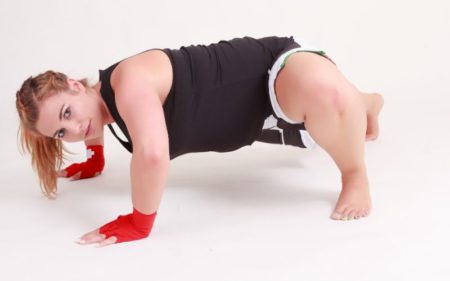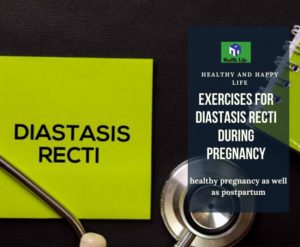Do you wonder what is diastasis recti or DRA? It is a complete or partial detachment of the rectus abdominal. It is also called six-pack muscles. These muscles connect at the stomach’s midline. In short, diastasis recti abdominal is about the rectus abdominal separation in the linea alba. Most commonly, pregnant women experience this issue. However, some men also suffer from DRA. Anyway, this post is about exercises for diastasis recti during pregnancy.
DRA causes hormonal shifts to pregnant women. Furthermore, it also places stress on their core. There are many exercises for diastasis recti prevention.
More About Diastasis Recti.
The key symptom of diastasis recti is a bulge in the person’s stomach. It is specifically seen during the contraction of the abdominal muscles.
One can also notice it in times of straining these muscles. Some other diastasis recti symptoms include constipation, lower back pain, bloating, etc.

Remember, DRA is rather common in times of as well as after the pregnancy. It is due to the stretching of abdominal muscles or stomach muscles by the uterus.
According to a study, 60% of women may face this issue throughout or after pregnancy. Even newborn babies can suffer from this problem. DRA may also be a result of the incorrect lifting of heavyweights.
Moreover, excessive or improper abdominal exercises may also cause the same. Both pregnancy belly and post-pregnancy belly can show the symptoms of DRA.
Why Should One Choose Exercises For Diastasis Recti?
An examination is necessary to find out Diastasis recti. An expert performs an abdominal crunch during examining with two fingers. It is performed below and above the belly button. As a result, it becomes possible to experience abdominal wall separation.
However, the width of one finger or small is okay. Nevertheless, anything beyond the two fingertips represents DRA. However, exercises for diastasis recti can greatly help to prevent this condition.
Some exercises can boost the engagement of transverse abdominal muscles. And as per the studies, these exercises can more likely lower abdominal separation.

As a result, it alleviates the symptoms linked with DRA. Irrespective of the source of DRA, a strong hope is certainly there to have an efficient core.
It is a misconception that the separation of an abdominal muscle cannot be fixed. Proper
diastasis recti exercises are there to help people come out of it.
Top Exercises For Diastasis Recti Prevention.
Now, it is time to talk about some best-in-class belly exercises to prevent DRA.
Modified Crunch: One Of The Best Exercises For Diastasis Recti.
It is about pulling rectus abdominal muscles manually together. Lying on the back with your knees bent is the first task. Remember, your feet must be in a flat state on the ground. Take your hands around your waist.
You can also wrap a belly band or a towel for this purpose. This wrapping would pull your abdominal muscles together. It is time to breathe in deeply for expanding your belly.
Now, breathe out slowly with the contraction of your abdominals. Pull the abdominals inward, and elevate your head off the ground. Now, get back to the initial state and repeat the process.
Modified Pushups.
It is among the popular exercises for diastasis recti prevention. Start the exercise in a kneeling pushup state. Remember to keep your back straight as well as core tight. Now, it is time for placing your hands in the straight line with your chest.
Your hand’s position needs to be wider than your shoulders. It is time to bend your elbows a bit and lower them toward the ground.

Do not sag your lower back down or elevate hips excessively high. It is time for pressing your back up to the initial position and breathing out.
Do these pushups hurt your wrists? Then, you can perform these modified pushups on the knuckles or firsts. Also, use grip dumbbells or pushup handles for keeping your wrists straight.
Plank.
Start the workout by lying in a prone position on your forearms. Take the support of your elbows by placing it under your shoulders on kneeling or toes.
Make your abdominal in tight by bracing your belly. During the maintenance of your abdominal contraction, you should tighten your glutes. The same applies to the inner thighs and pelvic floor. Do not forget to maintain a straight body posture.
Elevate the hips or have a pause, if required. Nonetheless, a proper posture is more essential than the overall duration. Maintain a tight core throughout the duration. Your breathing must be steady.
Pelvic Tilt Using Crunch On Ball.
First, sit on a stability ball in a well-inflated position. Now, it is time for rolling down at a slow pace. Continue it as long as you feel comfortable on it with your lower back.
Maintain balance in your body. Do not forget to take your feet under your knees directly. Next, stabilize your neck by supporting your head in a gentle way.
Breathe out and roll up your shoulders a bit from the ball within a crunch. The hips would press up and off from the ball throughout the crunch. In this state, you need to squeeze your lower abdominals.
Do not forget to squeeze the pelvic floor and glutes as well. It is time for breathing in and taking the hips and shoulders to the initial state slowly.
Remember, it is an extremely short motion range. Your core must be engaged during the entire session. Does it seem extremely difficult to start? Then, you can just concentrate on the crunch excluding a pelvic tilt.
Bridge On Stability Ball.

Rest your head on the ball comfortably while taking your neck in a neutral, supported state.
Align the hips, knees, and ankles at a 90-degree angle. It is time for lowering the hips in the direction of the ground. Next, elevate the hips slowly. Moving the hips may not seem comfortable on some exerciser’s lower back. It is alright. Just maintain the top position.
You can also tuck the pelvis for expanding the lower back muscles. Maintain your knees over your ankles. Remember, the ball must not move throughout the session.
Opposite Arm & Leg Extension.
Make your back straight with the hips level as well as core tight. Now, elevate one of your legs straight behind. Simultaneously, bring your opposite arm in front of your directly.
Reach and breathe in. It is time for taking your knee towards your elbow. At the same time, squeeze your abs. Also, round your back, and breathe out. Repeat the same strategy on one side and then execute on the other side.
Wrapping Up
What is the conclusion of science in this regard? What is the most effective way to prevent diastasis recti? It is the consistent weight management, physical activity, and strengthening workout. The latter includes crunches.
The duration of this regimen is throughout the healthy pregnancy as well as postpartum. Now, you know about exercises for diastasis recti. Moreover, you also know that diastasis recti is preventable.
You can also consult an expert on how to flatten the stomach in diastasis recti. What do you think about the prevention of diastasis recti? Do not forget to express the same in your comment.
